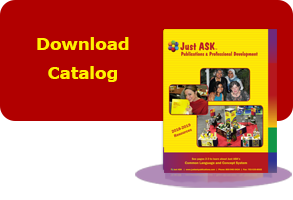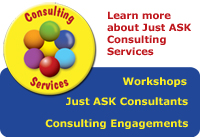
Volume VI, Issue II
|
Heather Clayton, the author of Making the Standards Come Alive!, is the principal of Mendon Center Elementary School in Pittsford Central School District, New York. She is also a co-author of Creating a Culture for Learning published by Just ASK. |
Growth Mindsets
“I don’t divide the world into the weak and the strong, or the successes and the failures. . .I divide the world into the learners and the non-learners.”
Benjamin Barber
“Whether you think you can, or think you can’t — you’re right.”
Henry Ford
As educators, one of the greatest things we can teach our students about is growth mindsets and how to use the strategies that accompany that mindset. When it comes to achieving high standards and a sense of well being in school and in life, a growth mindset boosts motivation and engagement, and allows us and our students to take risks and learn from our mistakes.
So what is a growth mindset? According to Stanford psychologist Carol Dweck, there are two types of mindsets; a fixed mindset and a growth mindset. When someone has a fixed mindset, they are of the belief that intelligence is something they are born with and that it cannot be changed. Fixed mindset thinking leads learners to believe they are either smart or dumb, and there is nothing that can be done to change it. Very often those who have adopted a fixed mindset are overly concerned with how they will be judged and are unlikely to engage in challenging tasks and take risks as learners. For them it is about preserving their self-esteem: therefore, many students with fixed mindsets give up easily when faced with something difficult.
Learning can be an exciting process for students who maintain a growth mindset. With a growth mindset, there is the belief that intelligence can be developed through effort. Learners with growth mindsets see challenges as opportunities, embrace mistakes as chances for new learning, and respond to failure by working harder. Therefore, in concert with teaching our academic standards, we need to teach our students to believe that they have the power to change and that they are a continual work in progress.
Strategies for Promoting a Growth Mindset
Teach students about their brains
There are far-reaching benefits to teaching our students about their brains. When students can understand and visualize how their brains work there is an increase in their motivation, a positive response to challenges, and a willingness to take risks. It is important for students to understand that our brains are malleable and elastic muscles. Everyone has the opportunity to grow their brain to get smarter. To demonstrate this, use a sponge as a metaphor for the brain and show students how when we add water (new learning), the sponge (their brain) expands and absorbs the water. Without any water the sponge becomes dry and brittle. This quick example helps students visualize what is happening as they acquire new learning.
In addition to absorbing new learning and expanding, our brains are also making new connections. We have billions of cells called neurons in our brain, and while some are connected others are not. The more learning we do, the more connections are made between our neurons. Our learning also strengthens the connections that already exist. Our brains can actually be rewired through our learning experiences!
To explain neurons to students, use Neuroscience for Kids, a website supported by the National Center for Research Resources (NCRR). https://faculty.washington.edu/chudler/introb.html#tn
Use and reinforce the language of a growth mindset
“Destiny is not a matter of chance, it is a matter of choice; it is not a thing to be waited for, it is a thing to be achieved.”
-Winston Churchill
A tell-tale sign that a student has established a growth mindset is through the language he uses to reflect and motivate himself. The following anchor chart shows language that educators and parents can use to coach students into using positive, growth-minded self-talk. It is a powerful practice to post charts such as these in classrooms or to copy them for each students work folder.

Provide the right praise and feedback
“Don’t tell me how talented you are. Tell me how hard you work.”
-Arthur Rubenstein
When promoting a growth mindset, the kind of praise given to students is critical. While telling our students “you are smart” or “you are talented” seems well-intentioned, it can actually undermine your efforts in establishing a growth mindset. When praising students in this way, they are less likely to take on challenges for fear of not looking “smart” or “talented.” Instead they take the easier road in an effort to preserve their dignity rather than risk mistakes.
Instead, students should be praised for their efforts, perseverance, flexibility and focus. Praise should be specific to the processes in which they are engaged and in a way that is specific and authentic. It is also important to note that this type of praise is not just telling our students they “tried hard,” but rather highlighting what worked about their strategies and efforts. Praise should convey what it is that is valued. Some examples include “I’m impressed with how you tried to solve that problem a second way when the first strategy didn’t work,” or “Your hard work paid off because now you have a developed piece of writing that really shows your thinking.” In summary, praise should reinforce what students have done that is successful so that they may be successful again in the future.
Another important strategy when providing praise and feedback is to embrace the power of “yet.” When students share fixed mindset thinking, follow their words with “yet.” For example, “I can’t do this” becomes “I can’t do this yet.” Or “I don’t understand” becomes “I don’t understand this yet.” The word yet shows hope and optimism and can make a significant difference in how our students view their learning. Using the word “yet” shows that you believe the student will succeed and that you value their perseverance and efforts.
Explicitly teach the habits of mind that lead to a growth mindset
“It’s hard to beat a person that never gives up.”
-Babe Ruth
In their book A Mindset for Learning: Teaching the Traits of Joyful, Independent Growth, Kristine Mraz and Christine Hertz recommend explicitly teaching certain habits of mind in order to build and enforce a growth mindset. According to their research, the following habits of mind are the ones that came up repeatedly in their research about growth mindsets. Their recommendation is to teach each habit of mind separately, and as more habits of mind are introduced, weave them together to reinforce their interconnectedness.
Optimism: Optimism breeds hope and a recognition that success is possible. Optimists are those who will take risks and try new challenges because they believe that is how they grow. In the classroom, students can be taught to be optimistic and practice optimism through their engagement in challenging tasks. By teaching optimism, we are teaching our students to be confident learners who are unafraid of the results of their efforts.
Flexibility: When our students recognize and try different strategies to solve problems, they are being flexible. Our students should become flexible thinkers, whose thoughts change as new learning occurs. Flexible thinking involves seeing multiple ways to address a task, evaluating their effectiveness, then implementing a strategy. If one strategy doesn’t work, flexibility is the willingness to try something else.
Resilience: Resilience means our students can recover from setbacks and bounce back ready to try again. Without the ability to bounce back from failures, our students are less likely to take risks. Therefore resilience needs to be developed in supportive environments where it is acceptable to take risks and experience failure. The goal is to reinforce a cycle where our students try, evaluate and reflect, then try again.
Persistence: When something feels hard for students, they are persistent when they keep trying. Persistence is important when our students are engaged in the right work. The caution, however, is that if a student is headed in the wrong direction, it is a time to practice flexibility and change directions in lieu of persisting on the wrong track.
Empathy: When our students have empathy, they can feel what others feel. They are able to relate to others in a way that shows they have the ability to walk in their shoes. The teaching of empathy begins with awareness. As students become increasingly empathetic towards others, they are more likely to advocate for fairness and justice. Without empathy, our children are less likely to be able to manage stress and perform academically. The teaching of empathy means our students possess happiness, strong relationships, and a desire to make our world a better place.
Mraz and Hertz offer teaching tips for the aforementioned habits of mind. These tips include:
- Selecting high quality, relevant and accessible texts to ignite robust discussions about these habits of mind;
- Engaging students in re-reads of these important text selections to bring about a deeper selection;
- Using texts to anchor discussions, then allowing students to take the lead and supporting them in discovering concepts;
- Naming the habits of mind and applying visuals to each of them so students can quickly access them.
- Empowering students to find examples of these habits of mind in the real world and reflect on concept;
- Linking new habits of mind to the ones that came before them and continuing to emphasize their interconnectedness.
Leverage mistakes
“Success is the ability to go from one failure to another with no loss of enthusiasm.”
-Winston Churchill
Mistakes are something to be celebrated. When our students make mistakes, it is important to encourage productive struggle rather than careless work. If a student is engaged in a productive struggle it means they are trying again, working to make sense of confusion, using new strategies, and becoming clear about their thinking. Students engaged in a productive struggle ask questions and remain open to feedback and the ideas of others. These students reflect on what went wrong and employ ways to get themselves back on the right track. As educators and parents we should embrace these struggles and help our students learn from their mistakes. In the words of Carol Dweck, the question we should be asking our students is “Who had a fabulous struggle today?”
Learn from others
“History has demonstrated that the most notable winners usually encountered heart-breaking obstacles before they triumphed. They won because they refused to become discouraged by their defeats.”
-B. C. Forbes
When our students possess a growth mindset, they become inspired by positive role models. They see themselves as someone who can accomplish anything through hard work and they count on role models for motivation. Students with a growth mindset can see themselves in others and recognize that role models provide a roadmap for success. Positive role models are those that overcome hardships, accept others, inspire others, have a sense of self-worth, and demonstrate strong values.
An important tool for inspiring our students is the use of literature and non-fiction texts that tell the story of amazing individuals who persisted in the face of challenge.
Role Models that Inspire a Growth Mindset
Elementary

Rosie Revere, Engineer by Andrea Beaty
Rosie Revere, a character inspired by the fictional “Rosie the Riveter,” finds inspiration in the most unlikely places. She uses odds and ends to build inventions, but hides them under her bed for fear of failure. However, Rosie soon learns that failures are not anything to fear, but rather to celebrate. The book also includes a brief historical note about the important role of women during World War II. “We can do it!” is their slogan which is more than fitting when discussing a growth mindset.
Memorable quote: “Life might have its failures, but this was not it. The only true failure can come if you quit.”
 Emmanuel’s Dream: The True Story of Emmanuel Ofosu Yeboah, by Laurie Ann Thompson and Sean Qualls.
Emmanuel’s Dream: The True Story of Emmanuel Ofosu Yeboah, by Laurie Ann Thompson and Sean Qualls.
Born in Ghana, West Africa, Emmanuel Ofosu Yeborah was determined to prove that being disabled “does not mean being unable.” His plan was to bicycle around Ghana to prove that he could do anything an able-bodied person could do.
Memorable quote: “He proved that one leg is enough to do great things-and one person is enough to change the world.”

Wangari’s Trees of Peace: A True Story from Africa, by Jeanette Winter
This picture book is the true story of Wangari Maathai, a Nobel Peace Prize winner and environmentalist who serves as a role model for determination and inspiration. Wangari’s Trees of Peace includes an author’s note providing the historical backdrop for the story.
Memorable quote: “The earth was naked. For me the mission was to try to cover it with green.”
 Flying Solo: How Ruth Elder Soared into America’s Heart, by Julie Cummins.
Flying Solo: How Ruth Elder Soared into America’s Heart, by Julie Cummins.
The year was 1927 and women were supposed to be in the kitchen. Not Ruth Elder. She set out to prove she could do anything a man could do including flying an airplane across the Atlantic Ocean. Her story is one of determination and courage.
Memorable quote: “Ruth got lost a few more times, but she never lost her determination to prove she was a competent flyer and she could finish the race. It took nine days of grit and gumption, but Ruth finished the course, placing fifth.”
 Nelson Mandela, by Kadir Nelson
Nelson Mandela, by Kadir Nelson
This engaging picture book tells the story of Nelson Mandela, who had a fierce determination to change South Africa. He believed in equality, justice, and peace for all and vowed to make South Africa belong to everyone. Following the inspirational story of Mandela, the first black president of South Africa, readers will find a note from the author and a bibliography of additional resources.
Memorable quote: “We must forget our terrible past and build a better future for South Africa. Let us continue to fight for justice and walk the last mile to freedom.”
Middle/High
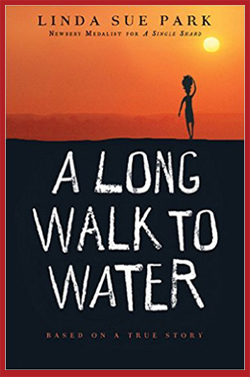 A Long Walk to Water, by Linda Sue Park
A Long Walk to Water, by Linda Sue Park
Based on a true story, A Long Walk to Water is a dual narrative about two children from Sudan caught in war, drought, and famine. Nya, a girl from a small village, fetches water for her family walking eight hours a day in difficult conditions, Salva Dut flees his home during war and walks to find refuge in Ethiopia and Kenya. The stories of these two determined survivors are interwoven masterfully.
Memorable quote: “He proved that one leg is enough to do great things-and one person is enough to change the world.”
 I Am Malala: How One Girl Stood Up for Education and Changed the World, by Malala Yousafzai with Patricia McCormick
I Am Malala: How One Girl Stood Up for Education and Changed the World, by Malala Yousafzai with Patricia McCormick
Malala was raised in Pakistan; when she was ten, the Taliban took control of her region with terrorism. Malala stood up for what she believed in and fought for the right to an education. Almost losing her life for her cause, she is now the youngest Nobel Peace Prize winner. This Young Reader’s Edition of her memoir includes photographs, a glossary, and a timeline of important events.
Memorable quote: “We were scared, but our fear was not as strong as our courage.”
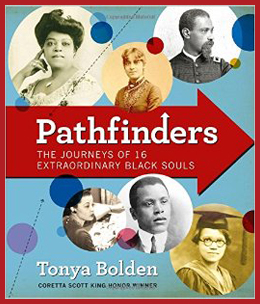 Pathfinders: The Journeys of 16 Extraordinary Black Souls, by Tonya Bolden
Pathfinders: The Journeys of 16 Extraordinary Black Souls, by Tonya Bolden
Pathfinders is a winner of the Coretta Scott King Honor and commemorates the lives of sixteen individuals who took risks and found success. This book celebrates the extraordinary accomplishments of scientists, entertainers, an architect, a magician, a race car driver and more. Photographs, timelines and engaging text all tell the story of these amazing pathfinders who beat all odds.
Memorable quote: “Grit. Guts. Goals.”
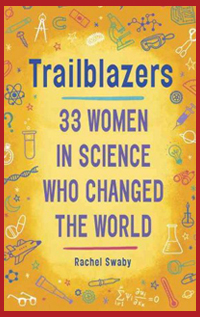 Trailblazers: 33 Women in Science Who Changed the World, by Rachel Swaby
Trailblazers: 33 Women in Science Who Changed the World, by Rachel Swaby
This book includes short biographies of women scientists in the fields of biology, medicine, astronomy, and technology. These women were daring and inspirational and their efforts changed our world.
Memorable quote: “Each woman held her curiosity tightly, as if gripping the string of a kite, and kept at her quest for answers even when it became difficult.”
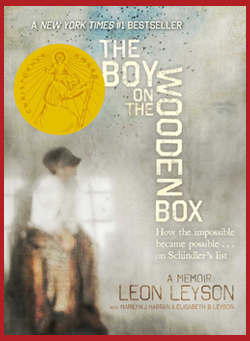 The Boy on the Wooden Box: How the Impossible Became Possible… on Schindler’s List, by Leon Leyson.
The Boy on the Wooden Box: How the Impossible Became Possible… on Schindler’s List, by Leon Leyson.
The life Leon Leyson knew changed overnight. He was forced into concentration camps, separated from his family, and experienced horrific things. Despite all of his hardships, he never lost hope or his will to survive. Leon’s New York Times bestselling memoir includes photographs and an afterword.
Memorable quote: “Despite impossible odds, we had made it. Miraculously Oskar Schindler, this complex man of many contradictions- Nazi opportunist, schemer, courageous maverick, rescuer, hero- had saved nearly 1,200 Jews from almost certain death.”
When our instruction rests on rigorous standards, it is our responsibility as educators to give them full access to the work. This includes explicitly teaching them the habits of mind that will ensure their success. After all, our students’ accomplishments with the standards rests on their decision to try.
|
Resources and Referenceswww.edutopia.org/article/growth-mindset-resources www.edutopia.org/film-festival-growth-mindset ww2.kqed.org/mindshift/2015/11/16/growth-mindset-clearing-up-some-common-confusions/ https://youtu.be/-_oqghnxBmY Dweck, C. Mindset: The New Psychology of Success. New York: Random House, 2006. Mraz, K. and Hertz, C. A Mindset for Learning: Teaching the Traits of Joyful, Independent Growth. Portsmouth: Heinemann, 2015.
|
Please include the following citation on all copies:
Clayton, Heather. “Growth Mindset.” Making the Standards Come Alive! Volume VI, Issue II 2017. Available at www.justaskpublications.com. Reproduced with permission of Just ASK Publications & Professional Development (Just ASK). ©2017 by Just ASK. All rights reserved.

